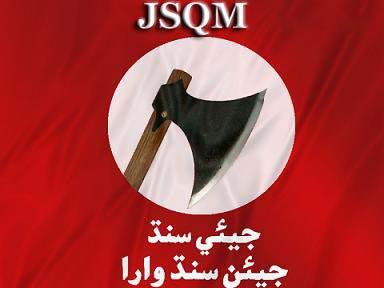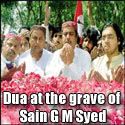Sindh's later history begins towards the end of the 6th century B.C., when the Persian King Darius I (the Great) sent the Greek explorer Scylax to survey the Indus Valley. In 325B.C., Alexander the Great of Macedona conquered Sindh from the north, but after his death in 323B.C., Greek influence began to wane. The region flourished once again in the days of the Buddhist emperor Asoka (Ashoka), who reigned about 274-237 B.C. In the 2nd century B.C., following the disintegration of Asoka's empire. Sindh became under the influence of Indo-Greek and Indo-Parthian dynasties. Later it was absorbed into the Kushan empire, which reached its height in the 1st and 2nd century A.D., During the region of kanisihka I, a great patron of Buddhism. At the close of the 4th century, Sindh was part of the empire of the Guptas, who effected a revival of Brahmanism in India.
Muslim rule in Sindh began with the Arab conquest of the region in 712 A.D. by Muhammad Ibn Kasim. He had been sent by Hajaj-Lbn yusuf, governor of Iraq for the Umayya Caliph, to punish the Brahman ruler of Debal for interfering with shipping in he Arabian sea. Sindh remained under Arab rule for nearly 300 years. The Sammas in 1351 A.D.
In 1025-1026H, Mahmud Ghazanvi marched through Sindh to Somnath, which is now in the Indian state of Gujarat. Arghuns & Tarkhans ruled over Sindh from 1521 A.D. to 1555 A.D. Sindh was then, annexed to the Delhi Sultanate in 1555 A.D. The Mughal (Mogul) emperor Akbar, who was born in Sindh , annexed it with Mughal empire in 1591A.D. Sindh maintained virtual independence under local Muslim rulers, the Kalhoras in 1713 A.D.
From 1700 A.D. to 1783 A.D. Kalhoras ruled over Sindh. From 1783 A.D. Sindh was governed by Amirs of the Talpur tribe, originally from Balochistan. Sir Charles Nagpier conquered them for Britain in 1843, transmitting the news in a message reading "peccavi", Latin for "I have sinned ." The conquest was later much criticized. How ever Sindh became united culturally, and linguistically, as well as politically, under the British. It was administered as part of Bombay presidency until 1936, when it was made a separate province.
















Join The Community